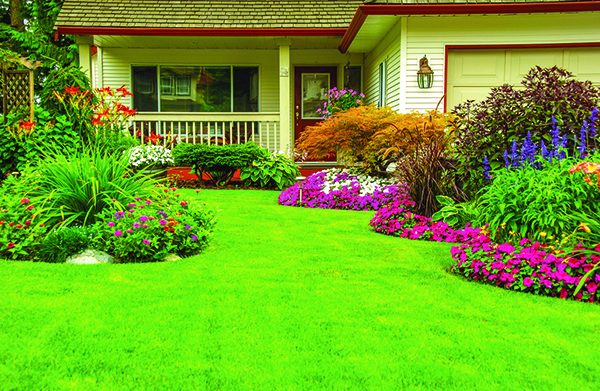Landscaping can be a rewarding hobby that instills a sense of pride in homeowners. Whether you prefer to get your hands dirty planting perennials or devote the bulk of your attention to crafting a lush, green lawn, chances are you will run into a problem during lawn and garden season.
Some problems are easy to identify, while others are more complex. The following are a handful of diseases homeowners may encounter when spending time on maintaining their lawns and gardens over the next several months.
Anthracnose
Anthracnose is a term used to describe various diseases that produce a host of unsightly symptoms. Those symptoms include tan to brown leaf spots or blotches; distorted, cupped or curled leaves; irregular defoliation, such as leaves falling in spring; and dieback, a condition in which trees or shrubs begin to die from the tips of their leaves or roots backward. Permanent damage due to anthracnose is rare, but the diseases can weaken trees over time and that can leave them vulnerable to pest infestations.
Brown Patch
Brown patch is unsightly and most likely to occur during summer. According to the Penn State Center for Turfgrass Science, perennial ryegrass, tall fescue and bentgrasses are the grass species most susceptible to brown patch. When a lawn is suffering from brown patch, its leaves and stems die out in large, circular patches. In high-cut grasses, these patches can stretch from a few inches to several feet. Tall fescue grasses may not exhibit symptoms of brown patch in patches. In such instances, the brown patch may be noticeable on individual leaves that feature tan or light brown lesions, and the Center for Turfgrass Science notes that these lesions will be surrounded by dark brown borders.
Dollar Spot
The American Phytopathological Society notes that dollar spot refers to a disease of the leaves of turfgrass. Grasses suffering from dollar spot will have white to straw-colored lesions that progress downward from the leaf tip or laterally across leaf blades. Leaf blades affected by dollar spot may have several small lesions or one large lesion, and in some instances, the entire leaf blade may be affected. Turfgrass affected by dollar spot may be susceptible to weed invasions.
Summer Patch
Summer patch is most common in warm climates and is characterized by yellow to straw-colored patches that can be several inches or several feet in diameter. According to Scotts Lawnservice, summer patch is often linked to shallow root systems that result from poor soil conditions. Large swaths of grass suffering from summer patch can be an eyesore, appearing as though the grass has burned under the summer sun.
Lawns, gardens, trees and shrubs are susceptible to the elements. Identifying lawn diseases quickly can help homeowners find solutions before the problems escalate.
This article is sponsored by:






